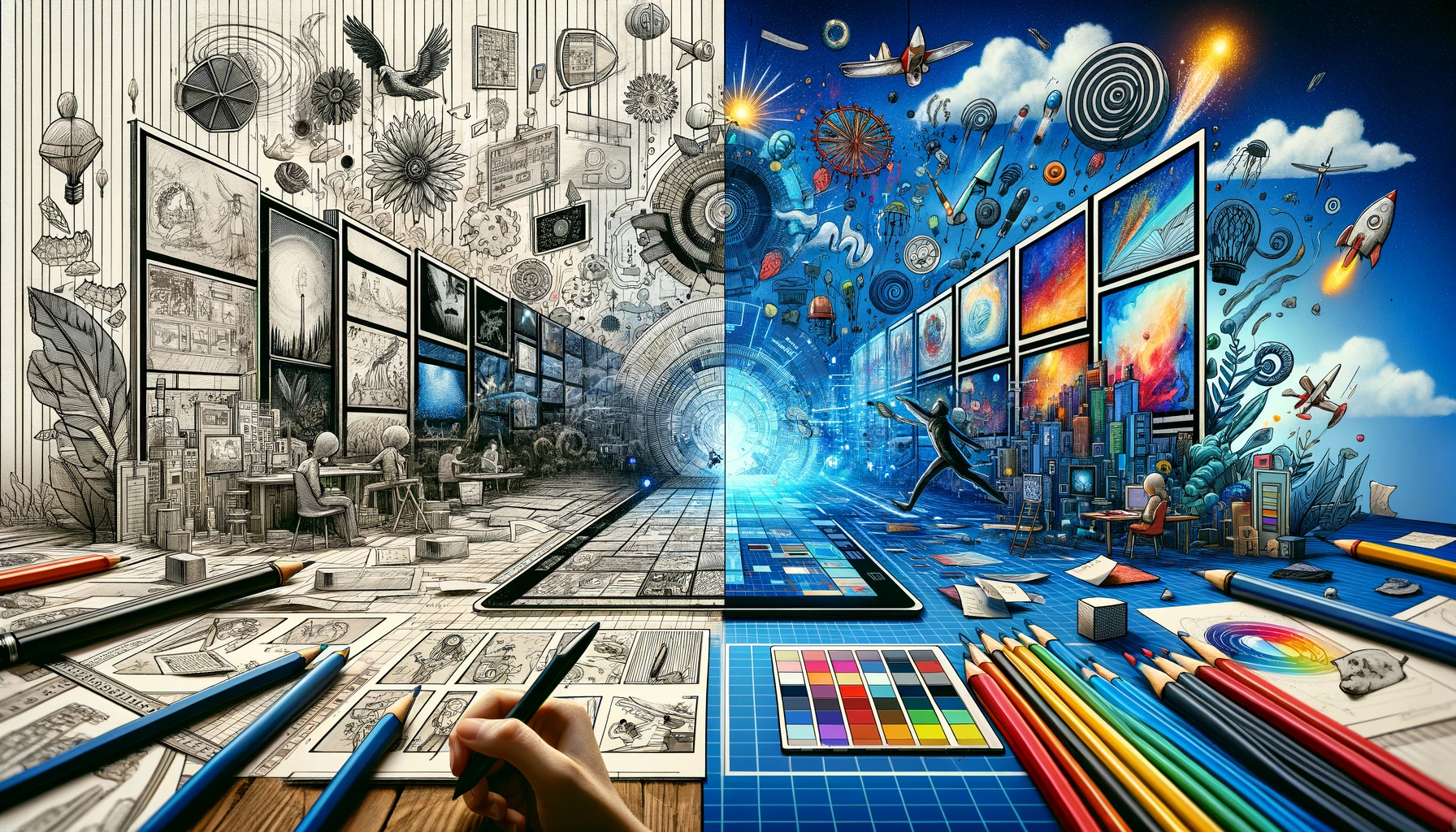
Storyboarding
Created on 26 March, 2024 • Insights & Articles • 1,988 views • 2 minutes read
Explore the art of storyboarding and its pivotal role in film, 3D design, and more. Learn how storyboards guide visual storytelling, enhance project planning, and streamline the creative process.
Unveiling the Power of Storyboarding in Creative Industries
Storyboarding, an essential planning tool widely used in various creative industries, plays a pivotal role in the development of films, animations, 3D designs, and more. This article delves into the significance of storyboarding and its multifaceted benefits across different creative domains.
What is Storyboarding?
Storyboarding involves creating a sequence of drawings or images to outline the visual story of a project. It serves as a visual script or blueprint, guiding creators through the narrative arc, scene transitions, and key visual elements before the production process begins.
Visualization of Concepts
Storyboarding allows creators to visualize and experiment with ideas before the costly process of production. In film and animation, it helps directors and animators foresee how the story unfolds, ensuring that the narrative flow is coherent and impactful. In 3D design and architecture, storyboards visualize the spatial and experiential journey, facilitating a deeper understanding of the project's scope and potential challenges.
Enhancing Collaboration and Communication
One of the most significant advantages of storyboarding is its ability to enhance collaboration among team members. By providing a clear visual reference, it ensures everyone involved in the project, from designers to stakeholders, shares a common understanding of the vision and goals. This common ground is crucial for efficient communication, feedback, and iteration, ultimately streamlining the creative process.
Streamlining Production and Reducing Costs
Storyboarding can significantly reduce production time and costs by identifying potential issues and changes early in the process. It allows teams to make adjustments before resources are committed to the production phase, minimizing the need for costly revisions and ensuring a smoother execution of the project.
Fostering Creativity and Innovation
While storyboarding serves as a planning tool, it also opens up space for creativity and innovation. It encourages the exploration of different narrative paths, visual styles, and compositions, enabling creators to refine their ideas and discover unique solutions that enhance the project's originality and appeal.
Educational and Pitching Tool
In educational settings, storyboarding is an invaluable tool for teaching visual storytelling, composition, and narrative structure. It also plays a crucial role in pitching projects, allowing creators to present their ideas in a compelling, visually driven format that captures the essence of their vision.
Conclusion
Storyboarding is more than just a preparatory step in the creative process; it's a catalyst for vision, collaboration, and innovation. Whether in film, animation, 3D design, or beyond, embracing the practice of storyboarding can elevate projects from concept to reality, ensuring they are compelling, cohesive, and creatively realized. As we continue to explore new frontiers in the creative industries, the art of storyboarding remains a fundamental tool that bridges the gap between imagination and creation.
~Realystic
Popular posts
-
RLX Auto Fitter AddonBlender Addons • 4,683 views
-
Blender 3d 4.2 LTS - Beginners GuideInsights & Articles • 3,691 views
-
Art of BlockingInsights & Articles • 2,235 views
-
Troubleshooting Blender Addon ConflictsInsights & Articles • 2,224 views
-